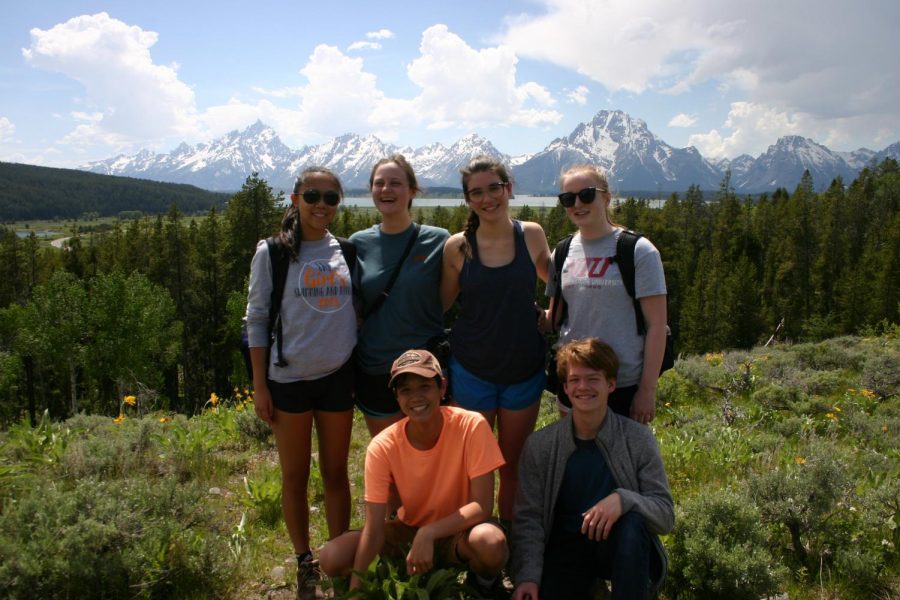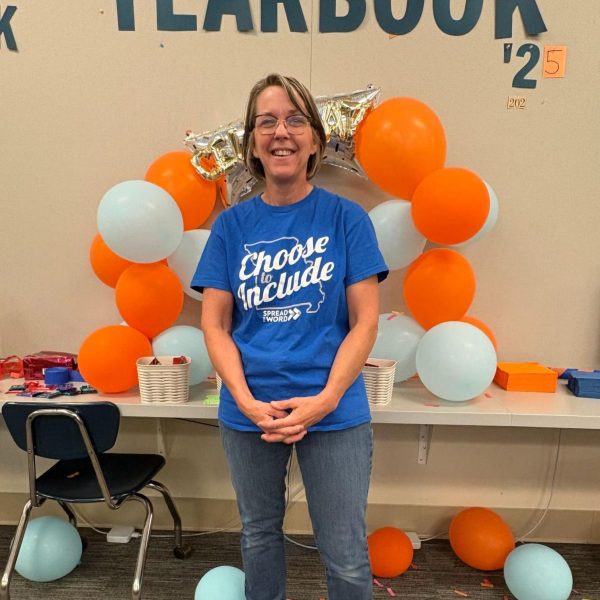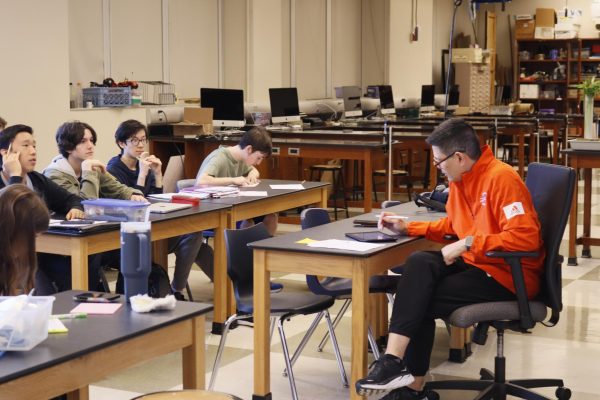Catching Crickets
A group of CHS students traveled to the Grand Tetons with CHS biology teacher Chuck Collis last spring to perform field research on a special type of cricket.
The students in front of the Grand Tetons. Top row (from left to right): Xuenan Jin, Julia Bautz, Liza Anzilotti, Dana Anderson. Bottom row (from left to right): Max de la Paz, Noah Kennedy
“No wifi or cell service,” CHS sophomore Noah Kennedy said as he described his trip to the Grand Tetons.
CHS seniors Xuenan Jin and Max de la Paz, juniors Dana Anderson and Liza Anzilotti and sophomores Julia Bautz and Noah Kennedy joined Clayton High School AP Environmental Science teacher Charles Collis on his trip to Grand Teton National Park in Wyoming this summer. The students were there for 16 days, leaving St. Louis on May 25 and returning on June 9, doing field research and conservation through the University of Wyoming.
Bautz went into the trip thinking that it would be very intense, but found it relaxing and enjoyable.
“I expected a lot more intensive stuff to do during the day, but I found it overall very interesting and satisfying,” Bautz said.
The purpose of the trip was to determine the effects immune responses had on the duration and intensity of a male cricket’s calling, and to see if that effect varied between virgin and non-virgin males.
“[This trip] gives students an opportunity to experience research that is on a level that is pursued in a university. [In] high school, usually our labs are a one- off type of experience because we are trying to be mindful of getting students lots of different experience through a curriculum. With this, instead, we spend two weeks gathering data that are all answering the same question,” Collis said.
At night, the students would catch about 50 crickets. They would then take them back to their cabin, where they gathered, or massed, them and determined their mating status. They also gave the crickets little slices of carrots to eat.
In the morning, the students would unload the crickets that they caught the night before. They massed the crickets again because the crickets had been eating carrots all night. The students then painted the crickets’ legs and back with fluorescent paint. Sometimes the students even put numbers on the crickets. This helped prevent mix ups between new crickets and crickets that they had already captured. The students would then run tests on the crickets.
Once the students had all of their information, they released the crickets back to the exact spot that they had captured them the night before.
When not doing research, the students had free time.
“After helping Mr. Collins in the lab, I would spend the day hanging out with the other students,” de la Paz said. “Some things we did were playing cards, reading, skipping stones at the dock and hiking. I also ate a lot because catching crickets is hard work.”
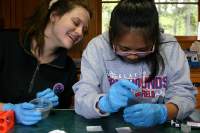
Julia Bautz and Xuenan Jin painting the crickets to help determine whether the cricket has been caught yet.
The students often spent their time reading, or going by the dock near their cabin, to hang out and enjoy the view of Jackson Lake and the Grand Tetons. They also took day hikes, ranging from two to six miles. The group even spent a day at Yellowstone National Park. They also took a trip to Jackson Lodge to treat themselves to ice cream and wifi.
They stayed in a small cabin at a research facility for the University of Wyoming in Grand Teton National Park. The cabin had two bedrooms, each with two bunk beds and one bedroom, with one bunk bed. It also had a kitchen/dining area, a nice living room, but no wifi or cell phone service.
Jin decided to go on the trip because she has an interest in science.
“I went on this trip because I [wanted] to do research and I like nature. I [felt like] it would be fun to meet new people and work with them,” Jin said.
For Kennedy, his favorite part was catching the crickets.
“I think the most fun part of the trip for me personally was just going out into the sagebrush and using nothing but your ears and headlamps to find those crickets, which were pretty hard to find at first, though it is something you can get the hang of,” Kennedy said.
Along with crickets, they saw other animals also.
“We saw a lot of deer, a moose, and also a bear walked by our cabin. The coolest thing was when a bison walked on the trail and we were super close to it,” de la Paz said.
Within the next few months, the students, along with Mr. Collis will have to sort through about 250 cricket recordings to actually get their results. They will eventually put their results into a project poster to present at a symposium at Illinois State University during the spring.
“I would highly recommend this trip to others. It’s truly amazing, living on your own in the elements for a while, seeing what the world has to offer without internet or wifi”, Kennedy said. “It’s really a character-building experience.”
A $50 or more donation includes a subscription to the Clayton High School Globe 2024-2025 print news magazine.
We will mail a copy of our issues to the recipients of your choice.
Your donation helps preserve the tangible experience of print journalism, ensuring that student voices reach our community and that student democracy thrives.
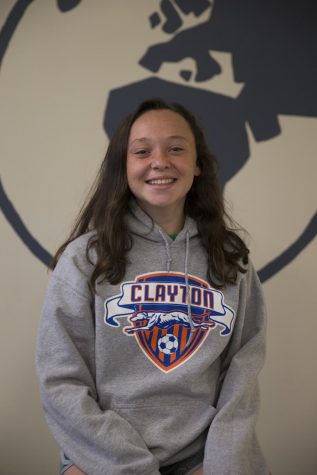
Cece is a sophomore and this is her first year on Globe. Cece joined Globe because she loves writing and wanted to get more involved at Clayton. She looks forward to growing her...



